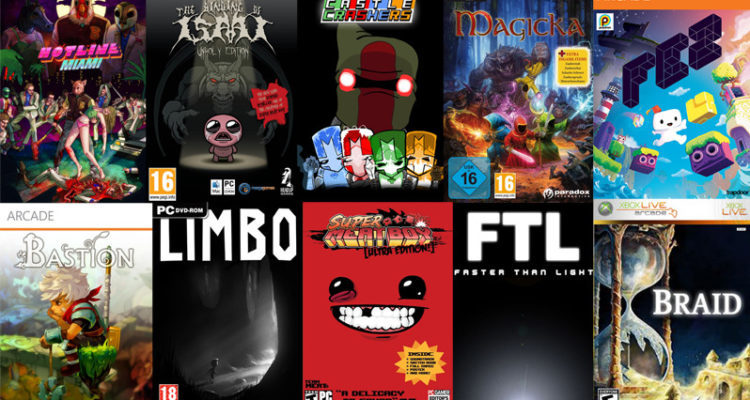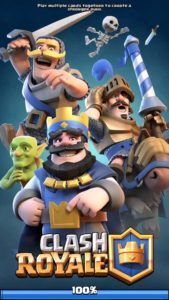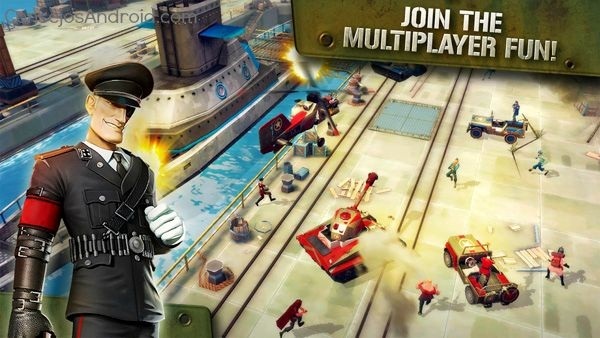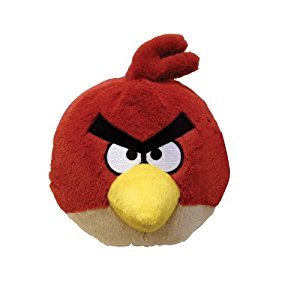59 ways to monetize your indie game

Don't you have a penny? Do you eat Doshirak? Desperately trying to earn a couple of bucks with your indie brainchild? We were all at the point of no return in development, when we wanted to get some income from the games, but did not know which way to go. In fact, sometimes we could not even imagine all the possibilities ...
This question is often raised. I constantly get emails asking “which monetization is better?” Or “make the game paid or use freemium?” The truth is that you need to check a lot of different things. What worked for your game may not work for others and vice versa. And if you think ... Putting the game on some portal and pouring traffic there is not the best marketing plan. I realized that most people are not interested in how to sell their games, but how to get money from them.
So today you are lucky. I have compiled a list of many different ways to monetize and generate income from your games, and now you don’t have to ask again about possible options. Here are described 59 ways to monetize indie games.
In-game purchases
This is probably the most famous business model for mobile games. Free to play games are becoming more popular. The principle is simple: you distribute the game for free and sell game items that allow the player to get new experiences. This model is dominant in mobile games, as well as common in social, MMO and even some PC games. Do not rush to immediately reject it! Here are some ideas for monetization inside the game:
')
 1. In-game currency. We all saw mobile apps or Facebook games that use premium currency. The idea is simple: use the simple earned currency in the game and add a separate buy one that can be spent on game items.
1. In-game currency. We all saw mobile apps or Facebook games that use premium currency. The idea is simple: use the simple earned currency in the game and add a separate buy one that can be spent on game items.2. Consumables. One of the best ways to get a steady income. If you bought something that you can own forever, you lose the need to buy it again. Consumables, on the contrary, it is necessary to spend money on them often.
3. Festive items. It is always better to have a reason to attract players. Items available on weekends and holidays are a great way to not only remind players of your existence, but also a great opportunity to create a shortage, inclining a player to purchase. Countdown timers work wonders!
4. Random rewards. Believe it or not, but by adding an element of chance to rewards, you can significantly increase the player’s desire to get a certain item. Random rewards create a sense of anticipation, and studies show that they drag out far more than ordinary rewards when it comes to monetization.
5. Blocked characters. If you allow the player to experience the existing experience of playing in the role of another character, then you can extract a little more pleasure from re-passing the game. By endowing additional characters with a new look, properties and abilities, you can enhance the effect and make some money.
6. Pumping / customization. In most games, there is a skill leveling and character customization. Players will pay to reduce the time required by the upgrade they need. Be careful when implementing this mechanism in a network game, beware of pay-to-win.
7. Extra lives / moves. If your game has moves or lives, then a great solution is to offer the player extra lives for a premium currency instead of losing. Since the key to the free-to-play model is to buy at the right moment, this solution definitely falls into this category.
8. Doubling experience / currency. Technically, the solution relates to consumables, but it is unique enough to highlight it. A consumable item that doubles the experience gained in a limited time or increases the number of coins collected can be considered significant enough. There are many players who value only items that save time. To give them such an opportunity is profitable, since time is more valuable than money for them.
9. Limited series of items. These items work just like holiday items, except that the holiday is not needed. Selling a predetermined number of items means that not everyone is enough. Every time there is a minimum stock of valuable items, demand goes up. The limited edition is a great way to increase demand and sell more stuff.
10. Offer wall. Selling game items and consumables is cool ... but HOW and WHEN you sell them is sometimes more important. Installing an offer wall in the right place is a really effective way to get people to buy your items. When players click on the item they want but cannot afford, show the offer wall. When players want to use premium content or DLC, show the offer wall. Offer wall, like access to content and items, greatly improves conversion and helps you make some money.
Advertising

Advertising exists almost as long as the Internet and is one of the best ways to make money without a single expense from the player. It is quite popular among indie developers because of its ease of use and the fact that third-party services take on all the smallest details. Most indies, especially in mobile development, consider advertising to be their main monetization strategy. Here are some methods of earning through advertising:
1. Banner advertising. Probably one of the most used types of advertising in games. Banner advertising is just a socket at the top or bottom of the screen. This is a great type of advertising, but such ads have lost their charm over the past few years. When players get used to them, the announcements are pressed less, therefore earnings fall. On the other hand, banners are probably the easiest type of advertising to integrate, especially in mobile games.
2. Fullscreen / interstitial advertising. Such advertising fills the entire game screen for a short period and closes. Unlike conventional banners, which can become familiar and go to the background, interstitials require attention to them before proceeding. As a result, they are usually better paid. Interstitial ads are best used between levels or after several lives spent.
3. Video advertising. Despite the fact that, as a rule, video advertising also works as interstitial, it is significantly different in that it requires full attention from the user. If video advertising is well done, then it is converted better than static analogs. Most efficiently use it between levels or losses of several lives.
4. Advertising in notifications. Probably the most annoying of all types of ads. I added it only to show all possible options. Such ads use push notifications to grab the attention of users and send them somewhere. For example, it could be some kind of offer wall or another monetized experience, on Android devices you can send a notification to another application or website. Advertising in notifications can even be used on PCs in Html5 games.
5. Advertising when leaving the game. Excellent practice - show ads before leaving, when players are ready to leave the game. Imagine that someone has finished playing your game, in which case he is much more likely to click on an ad to go on to the next entertainment. At this ideal moment, you can slip the user advertising another game.
6. Advertising other games / CPI. When you make a game, most likely there are other people who make similar games that are attractive to your audience. This is a great chance to either make money or negotiate mutual promotion with another developer. A simple menu item with the text “more games” that leads to the games of partners will be a good addition. If you promote someone else's game through an advertising network, you earn by the CPI model, which stands for cost per install.
7. Advertising when downloading. True, I did not see this method often and I do not know why. There are many services that allow you to earn money for visiting the link, showing the user an advertisement for 5 seconds. Such services are great for Html5 games or small addictive games. You can distribute the game for free, but get a small income from it.
Partnerships
This is probably one of the most misunderstood and underused methods of monetization of the game, especially in indie games. Partnerships allow you to make a profit in advance before the end of your game. In some cases, they allow you to get money before the game is finished or even before the start of development, depends on the partner. Here are some ways to monetize partnerships that I have gathered over the past few years:
 1. Promotional games. You can make games that are completely advertising partner. For example, the site Burger King or the old games Cap'n Crunch, which came in boxes with cereals. Partnership with a company requires a lot of initiative and a bit of sales experience, but it’s simpler than it seems.
1. Promotional games. You can make games that are completely advertising partner. For example, the site Burger King or the old games Cap'n Crunch, which came in boxes with cereals. Partnership with a company requires a lot of initiative and a bit of sales experience, but it’s simpler than it seems.2. Promotional items / characters. They differ from the items sold in the free-to-play game, as these items are free for the player. For example, you create a game about horse riding. Then you go to a company, like Levi's jeans, and force you to sponsor an extra rider with their logo. It works very well with small or medium brands and very niche products.
3. Promotion of paid games. The path is similar to CPI, except that you go directly to the owner of the game and make a deal, X $ for Y installations / days / views. Better with fast-growing games or with small ones that are trying to gain a foothold.
4. Affiliate offers / coupons. Affiliate offer is that someone owns a product or service, and you force your users to buy their product and get a commission. Affiliate offers work really well when they are targeted. Suppose your game is a military simulator, then an affiliate offer of something similar will be perfect. If you are creating a learning game, you are likely to find educational material suggestions. I hope the essence is clear. Often such offers can be issued in the form of coupons, for example, a user can get a month of free access to Netflix using your promotional code. Users receive a reward, you are a commission, everyone benefits.
5. Free with purchase. Everything is simple ... if you have other products, services or games, why not give out your game as a free bonus to buy? Additional incentives work just like discounts, and they work even better if you limit the term of the offer.
6. Polls. There are companies that pay for everyone who passes their survey. This is a really cool and unique way to monetize. Depending on the style of your game, it can be a great addition to your business model.
7. Investors. I must clarify; you should never consider investor money as an independent way of monetization. However, investors can help make the game better, pay your bills while you make it, and have many connections. I have included this item, since many indie developers consider the possibility of paying bills while they make games.
8. Bandy indie games. Partnering with one of the indie bundles is a great way to provide some visibility and make some money. Usually bundles allow users to pay as much as they want and divide the income between developers. This is a good way to get some money from your old game, or support a cause you believe in. However, I would not recommend using this method during the launch of the game.
9. Licensing. If you make Html5, web or the old-fashioned flash-games, you can license your games to web portals. These guys will pay you in advance, usually several thousand dollars. After that, they receive certain rights to the game for a given period of time (usually for earnings from advertising).
10. Branding. Like licensing, branding allows you to receive a lot of money from your partner in advance, but he will receive only a renamed copy of the game or its reskin. Branding, as a rule, allows a partner to use his version of the game only for a specific purpose (for example, for events).
Paid games
 One of the tried and true methods of making money in your indie game is simply to make it paid. There are several different ways to sell the game, which you could not even guess. Here are a few of them:
One of the tried and true methods of making money in your indie game is simply to make it paid. There are several different ways to sell the game, which you could not even guess. Here are a few of them:1. Normal sale. Good old way, nothing special. You send the game for sale, someone gives you money and gets the opportunity to download the game. This applies to both self-selling on your website and to stores such as Steam.
2. Many gaming portals. Same as regular sales, but, believe it or not, most developers forget to place the game on more than one portal. Steam is good, but there are a bunch of other distribution platforms. And the more people see the game, the better, right? This is especially true for Html5 and web games for which there are hundreds of portals.
3. Paid ad removal. The method is often found in mobile games. The free version comes with ads, but you can pay $ 1 or so to turn it off. Very well suited for games based on records, or games with high replayability.
4. Premium version. The sale of the premium version of the game is similar to the sale of advertising outages, with the exception that players pay to unlock the premium features of the game, to increase the amount of storage, and the like. Ideal for functional applications, but I have seen implementations in games. This method is often called the freemium model, when the basic version is free, but you have to pay for the premium.
5. Additional paid content / DLC. This is an extremely common way, especially for console and PC games. You have already launched the game and take money for new content, storylines, weapons, mechanisms, etc. This is the most common form of monetization after launch.
6. Serial games. Similar to the DLC, but you sell the game in parts. Instead of one game for $ 20, you can have 5 episodes of $ 4 each. Ideal for story and adventure games because of its high retention rate.
7. Sale of source code. Many developers make dream projects that seek to be very unique and niche. The source code of such games sells poorly. But, if you make arcade or casual mobile games, you can get very good money for selling source codes, allowing others to publish modified versions of your game. There are marketplaces where you can place your code and sell it, as in a regular online store.
8. Subscription. Large MMOs or games with exceptional retention rates follow this method of earning. If people love your game and they play all the time, a subscription might be a good idea. The game may require a subscription to run, or it may use the hybrid model of a freemium subscription when the game is free, but you must subscribe to receive additional content / privileges / items.
9. Pre-order / crowd funding. Just as with investors, you should not consider pre-orders as the only way to monetize. But as I said, if you expect to pay your bills while making the game of your dreams, it will help. Pre-order and crowd funding campaigns allow you to sell games in advance, just make sure you can provide them.
Billing
It is worthwhile to think in advance about how you will receive payments, but many indies put off the decision until the end. Payment methods and the process a player goes through to transfer money to you are extremely important. It is necessary to calculate and plan all the way from the first impression to the satisfaction of the buyer. Here are some ways that can help monetize your games:

1. Several payment methods. Bitcoin / PayPal / Apple Pay / Google Wallet are payment methods that are one of the most undervalued but effective methods to increase conversions. Naturally, the easier it is to make a payment, the more likely it is that someone will conduct it. Not a way to monetize, of course, but still a very important point.
2. Billing cellular operator. A special case of the previous paragraph, but designed specifically for mobile, as well as much more efficient. Paying with the help of a mobile operator is much easier than logging into your personal account or entering card data. It is effective in countries like Brazil, where, as a rule, they do not use credit cards.
3. Vouchers / Gift certificates. Allowing users to buy time / coins / lives for friends or relatives in the form of a voucher is a great way to get a little extra income, regardless of the business model chosen. Your game should be good and popular for this mechanism to work, but if you manage it, it will act effectively. Vouchers can even be distributed through your other games if you have already compiled a library.
4. Demo version / trial period. In the industry, there is rarely a method where the user is given a free trial period or a demo version of the game with the option of buying the full one. It is best to first collect credit card information, and automatically deduct money after the trial period. Often this method is used in MMO games with a subscription. In them, the launch of a free period requires these cards, since you will automatically be billed if you do not refuse. Of course, to use this method, you must have a really great game with a very high retention rate.
Data
Another way to monetize, which most indie developers completely ignore, whereas it can be the most profitable for popular games. To sell, donate and use data to generate income is simple and clear. It requires a bit of sales experience and some people skills, however it is a great way to monetize. Here are some tips on how to turn data into money:
 1. Email registration. By requesting an email address during registration, you get the opportunity to contact the user directly. It can be monetized in a variety of ways, for example, sending information about partner offers, merchandise, DLC or future games.
1. Email registration. By requesting an email address during registration, you get the opportunity to contact the user directly. It can be monetized in a variety of ways, for example, sending information about partner offers, merchandise, DLC or future games.2. SMS marketing. Just like with the mail, but now you have their phone number. Be very careful and ask for permission, as with this type of marketing you can easily get into trouble if you use it incorrectly. However, when used correctly, the method is extremely effective, as SMS messages have an opening ratio of more than 90%.
3. Selling data. User information, such as email address and phone number, is very valuable for companies targeting the same demographic groups, or for other games that want more players. You can make a deal to sell data directly.
4. Rent access to users. Instead of selling data (frustrating users), you can give access to your user base for a fee. You may be paid to send mail or text messages on their behalf, with the promotion of their games, products or services.
Online game
Ways to earn income from online games sometimes differ from the options used for single-player games. When a lot of involved people appear, the psychology of spending money by the players changes. With these changes, there is a great potential for monetization. Here are a few ideas:

1. Gifts. When your game revolves around teams or a competitive game, being able to give a friend your stuff or resources is a great incentive to actually buy them from you. We all need to be friends, right?
2. Trade. Similar to gifts, but the more options for using items and resources, the more valuable they become. And the more valuable they are, the more often players will buy them for real money.
3. Contests / tournaments. The introduction of a nominal fee for participation in a network tournament with real prizes is a completely underestimated method of monetization. Tournaments are great for some games, they can be repeated weekly or monthly, and players will never get tired of it.
4. Betting / betting. Similar to gifts and trade, but with the addition of skills and competition to encourage purchases. If players can place items on an outcome that they can control, then they are much more likely to stock up with premium items. First, to increase your chances of winning, and also to raise your stakes.
5. User Content. The fee for the level editor or access to the user content portal is suitable for earning with minimal effort. You can also distribute this content for free to game owners, increasing game time, replayability, and number of sales.
6. Social networks. If you are doing Html5 or web games, you can post them on social networks. Networks such as Facebook have very easy-to-use tools that make it easy to build in your games and benefit from a huge player base. It is best to combine this type of monetization with the freemium model or methods of online games.
Related products
It is not always sensible to produce extraneous things for sale, especially if you are a new developer and you do not have a large audience. Also merchandise is material, which means it costs money for production, and indies are not particularly famous for their abundance. But, if your game exists for a long time, or you have a sea of fans, the merchandise will take your income to a new level. Here are a few options for what you can do:
 1. Lure product. This tactic is often used in department stores and office buildings. The product is distributed free of charge or significantly below market value. The price should be low enough for it to attract attention. A bunch of people start calling or coming, and, as a rule, buy something extra. If you have a lot of games, it's a great idea to use one of them as a decoy to promote or encourage the purchase of other products or services.
1. Lure product. This tactic is often used in department stores and office buildings. The product is distributed free of charge or significantly below market value. The price should be low enough for it to attract attention. A bunch of people start calling or coming, and, as a rule, buy something extra. If you have a lot of games, it's a great idea to use one of them as a decoy to promote or encourage the purchase of other products or services.2. Peripherals. Some games require a special controller or device. You can distribute the game for free to those who bought the controller.
3. Special boxed editions. If people love your game, then it’s a good idea to release a special edition on physical media. During the launch or a year later with the DLC, in any case, you can get a few extra dollars from the games that are sold.
4. Wallpaper. If your game has iconic characters, scenery or art styles, then the sale of wallpaper is an extremely undervalued way of making money. Best suited to niche or very stylish games with a small but passionate audience.
5. Ringtones. Similar to wallpaper, but about music. If the game has a cult soundtrack (for example, like Hotline Miami), you can sell ringtones. Once again, suits stylish and niche games with enthusiastic players.
6. Keychains. You can make custom-made key chains in bulk to order and sell them to super fans. Everyone has keys, why not put a key on them?
7. T-shirts. They are made even easier than key chains, with the help of special services you can check the demand for them, even before creation. Such services will help you save on the first batch. Each T-shirt is made on request, so you automatically find yourself in the black.
8. Cases for phones. Again, it is very easy to order, they are cheap, they are loved, and often used by almost everyone. If you have cute characters or great art, this is what fans need.
9. Plush toys. Much better suited if your game is aimed at children or lovers of plush toys. Like Angry Birds, if you have attractive characters, you make great teddy buddies, and fans love them!
Conclusion
That's all! There are hundreds of ways to monetize your game, so do not think that you can never earn. Everything is possible, just a little work and experimentation is required. Consider the platform you are using and always pay attention to which methods work best for your particular game.
Did I miss something? If so, or you have add-ons, leave a comment below!
Source: https://habr.com/ru/post/322916/
All Articles